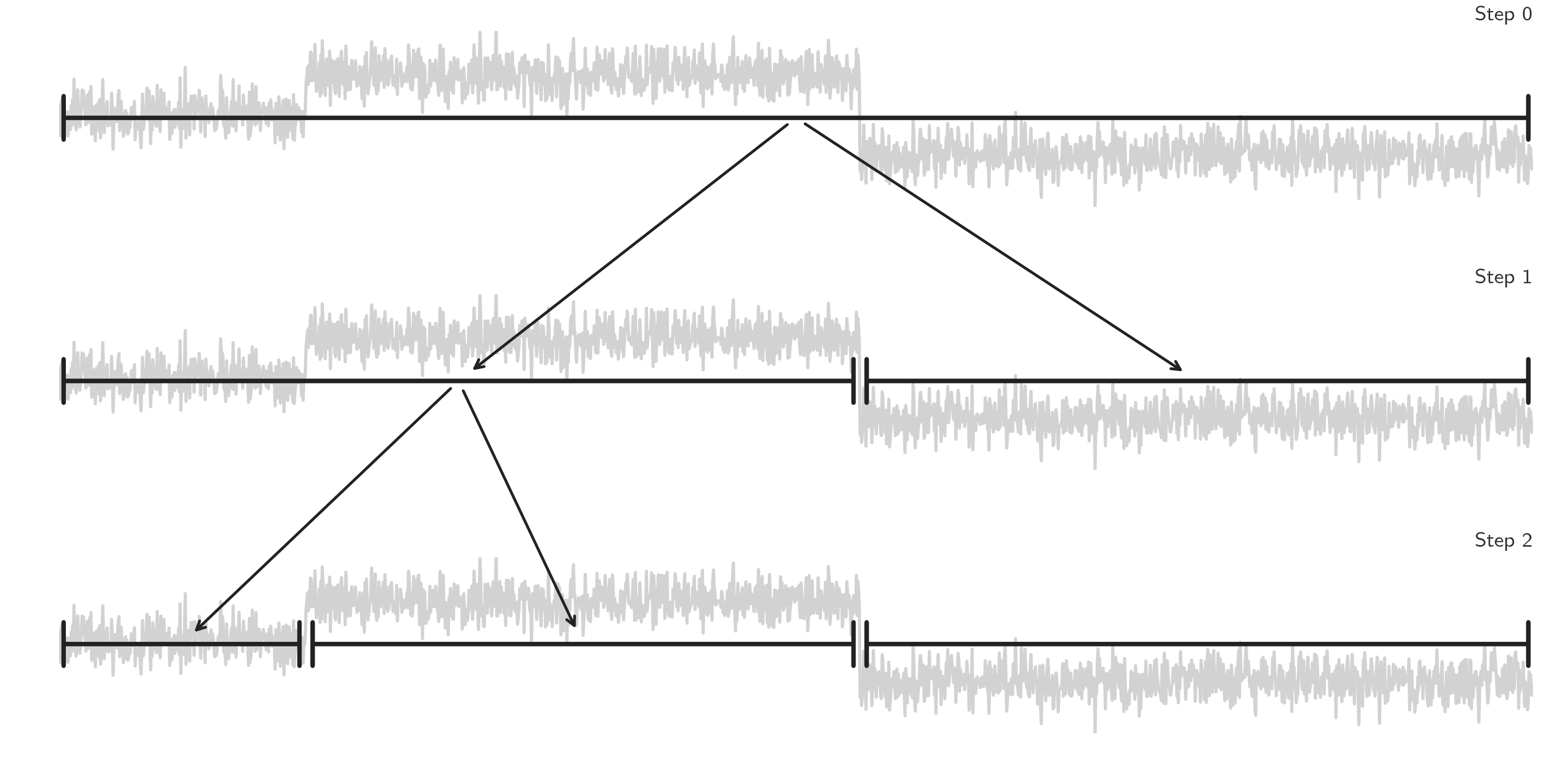Binary segmentation (Binseg)#
Description#
Binary change point detection is used to perform fast signal segmentation and is implemented in Binseg.
It is a sequential approach: first, one change point is detected in the complete input signal, then series is split around this change point, then the operation is repeated on the two resulting sub-signals.
For a theoretical and algorithmic analysis of Binseg, see for instance [Bai1997] and [Fryzlewicz2014].
The benefits of binary segmentation includes low complexity (of the order of \(\mathcal{O}(Cn\log n)\), where \(n\) is the number of samples and \(C\) the complexity of calling the considered cost function on one sub-signal), the fact that it can extend any single change point detection method to detect multiple changes points and that it can work whether the number of regimes is known beforehand or not.

Usage#
Start with the usual imports and create a signal.
import numpy as np
import matplotlib.pylab as plt
import ruptures as rpt
# creation of data
n = 500 # number of samples
n_bkps, sigma = 3, 5 # number of change points, noise standard deviation
signal, bkps = rpt.pw_constant(n, dim, n_bkps, noise_std=sigma)
To perform a binary segmentation of a signal, initialize a BinSeg instance.
# change point detection
model = "l2" # "l1", "rbf", "linear", "normal", "ar",...
algo = rpt.Binseg(model=model).fit(signal)
my_bkps = algo.predict(n_bkps=3)
# show results
rpt.show.display(signal, bkps, my_bkps, figsize=(10, 6))
plt.show()
pen parameter or a threshold on the residual norm using epsilon.
my_bkps = algo.predict(pen=np.log(n) * dim * sigma**2)
# or
my_bkps = algo.predict(epsilon=3 * n * sigma**2)
For faster predictions, one can modify the jump parameter during initialization.
The higher it is, the faster the prediction is achieved (at the expense of precision).
algo = rpt.Binseg(model=model, jump=10).fit(signal)
References#
[Bai1997] Bai, J. (1997). Estimating multiple breaks one at a time. Econometric Theory, 13(3), 315–352.
[Fryzlewicz2014] Fryzlewicz, P. (2014). Wild binary segmentation for multiple change-point detection. The Annals of Statistics, 42(6), 2243–2281.